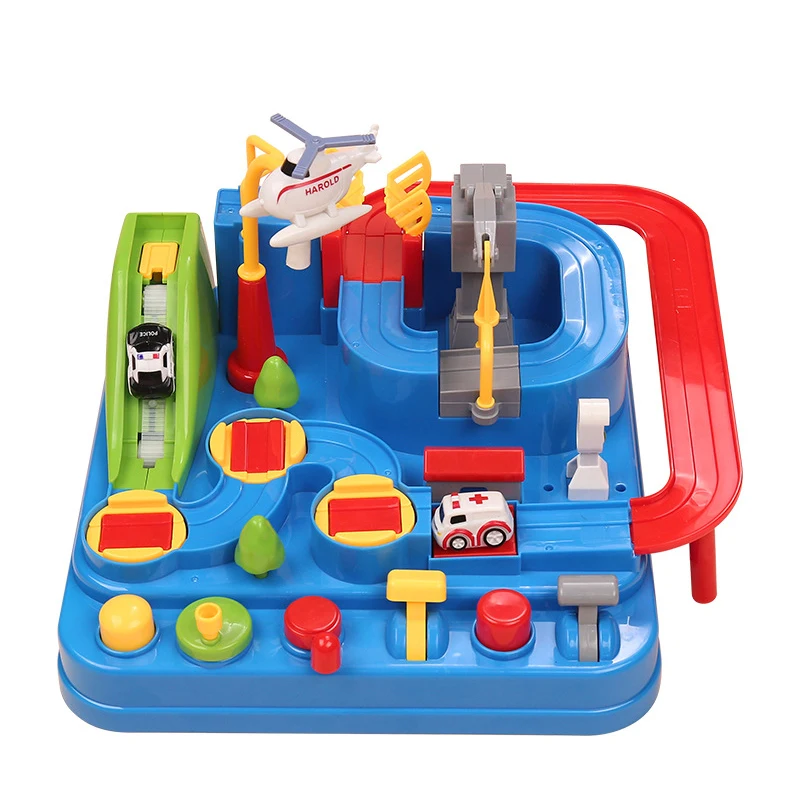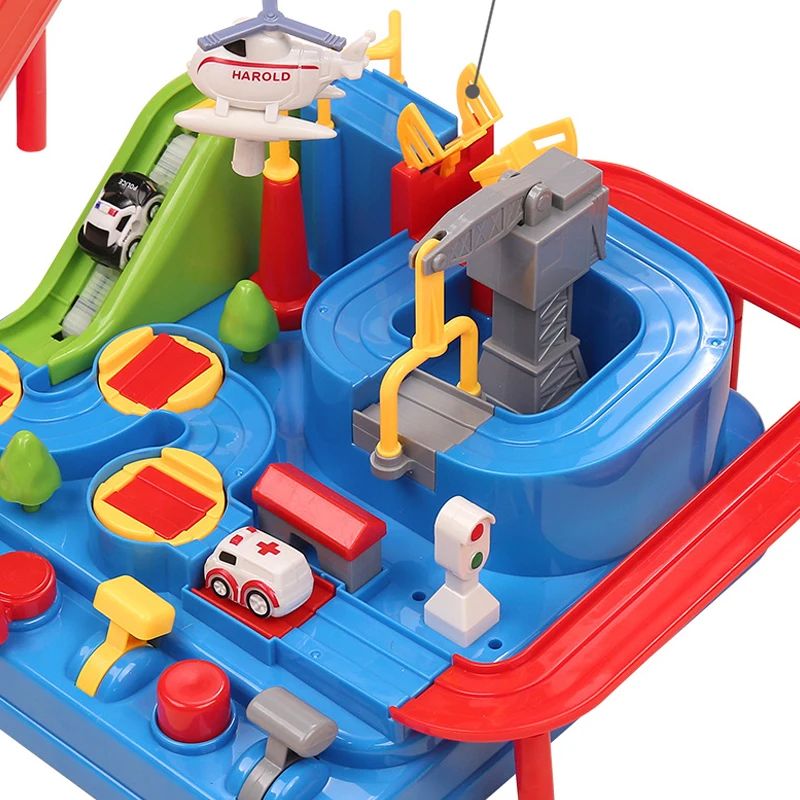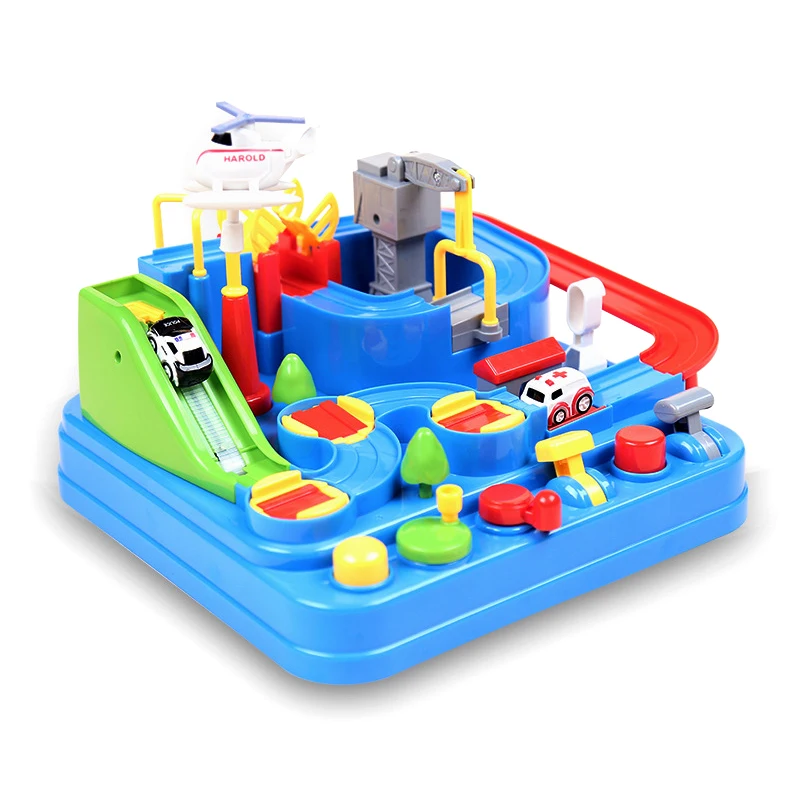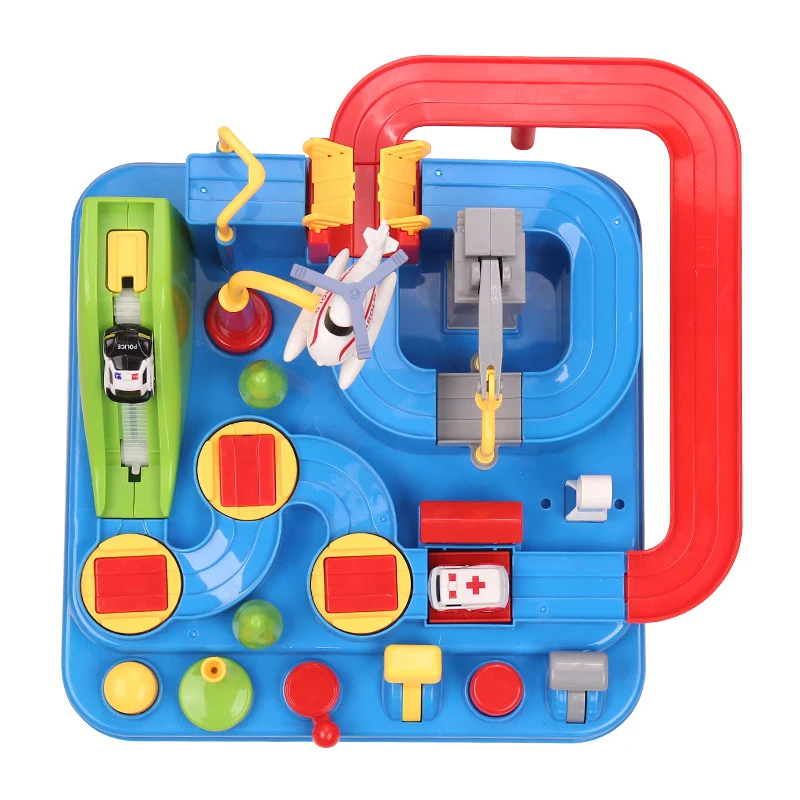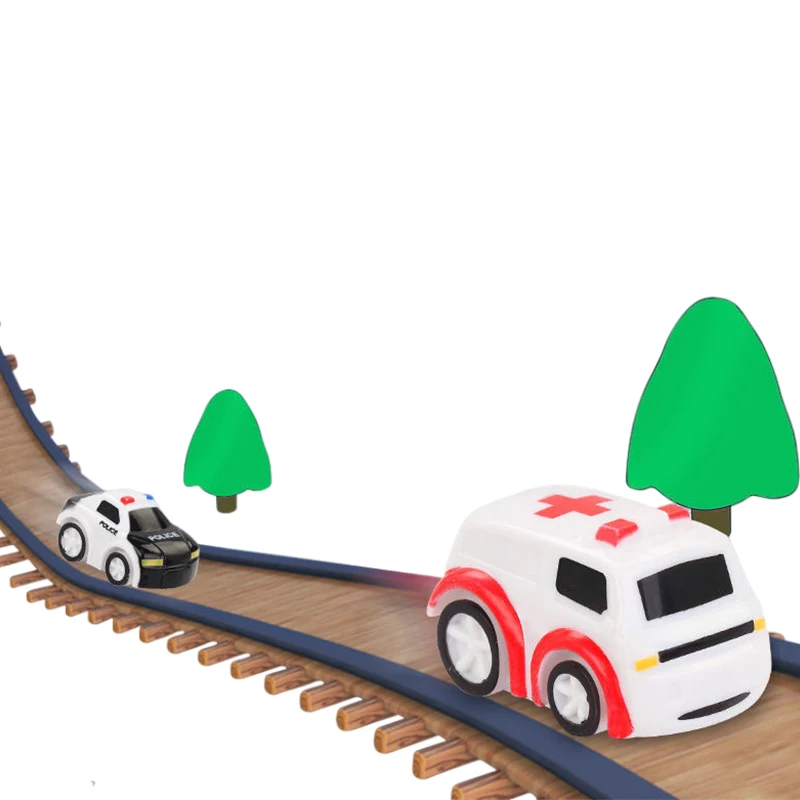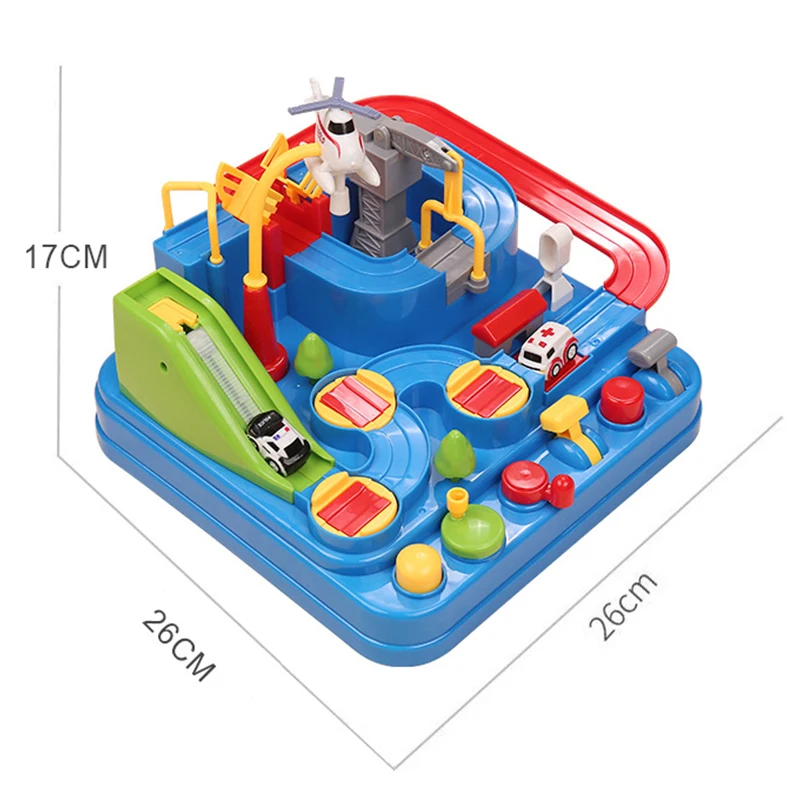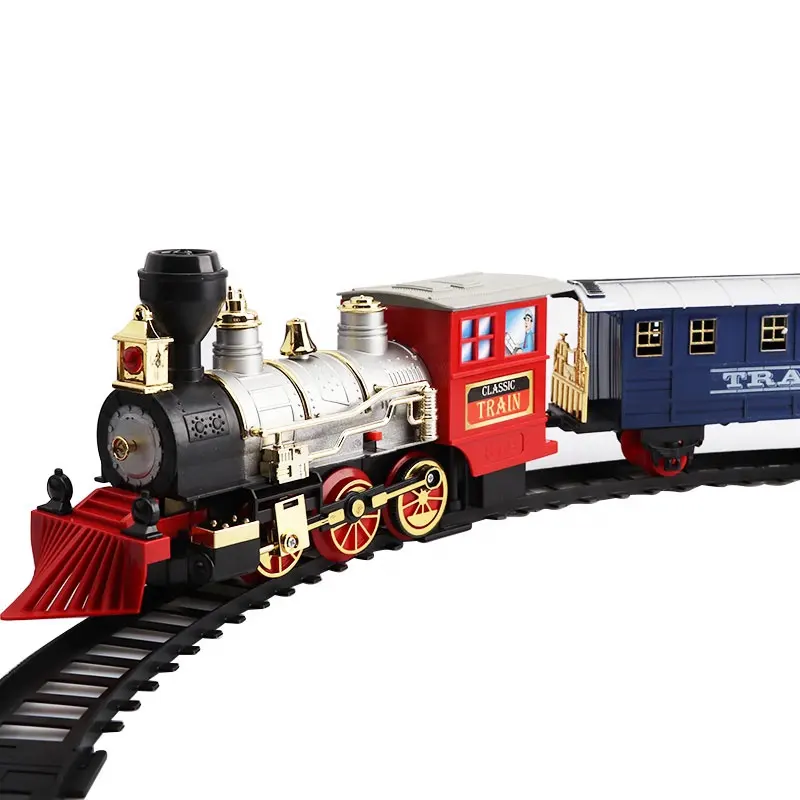Автомобиль Приключения детский трек автомобиль игрушка гоночный слот гоночная гонка обучающая
- Категория: Slot Toys >>>
- Поставщик: Quanzhou,Sen,Yan,Quan,Supply,Chain,Ltd.
Поделиться:
Описание и отзывы
Трекер стоимости
| Месяц | Минимальная цена | Макс. стоимость |
|---|---|---|
| Aug-20-2025 | 6.26 $* | 6.26 $* |
| Jul-20-2025 | 5.53 $* | 5.57 $* |
| Jun-20-2025 | 6.41 $* | 6.79 $* |
| May-20-2025 | 6.7 $* | 6.22 $* |
| Apr-20-2025 | 5.10 $* | 5.92 $* |
| Mar-20-2025 | 6.94 $* | 6.37 $* |
| Feb-20-2025 | 6.97 $* | 6.33 $* |
| Jan-20-2025 | 6.2 $* | 6.42 $* |
Характеристики
Product Description
The toy is a kind of educational toy, which has been playing a good role in the growth of children.
Product Name | SYQ050057 | Style | Educational Toys |
Brand | SYQ | Colour | Red,blue,yello,brown |
Material | Plastic(ABS) | Place of Product | Fujian Province,China |
Ages | 3 ages+ | Modes of packing | OEM by customers |
Weight | 1kg | After sale service | Email to SYQ |
Detailed Images

Material Description
Plastic(ABS),Environment-friendly materials, no harm to children.
Color Description
Change, think what you think.











FAQ:
1. Q: What is the difference between children's products and children's toys?
What are the targets of the US CPSIA and the EU EN71?
A: Children's products are products designed for the use of children, including children's toys, child care products and other
products mainly for the use of children;
And children's toys are mainly for children to play with the product.
CPSIA is for children's products and EN71 is for children's toys.
2. Q: What is an abuse test, and how many parts do abuse tests usually have?
A: Abuse test is a term derived from the American Toy Standard. It refers to tests that simulate the hazards of children's normal
or abnormal use of toys. These tests usually include: torsion test, tension test, drop test, deflection test, stress test, etc.
3. Q: What is the most stringent tension in the ASTM and EN71 abuse tests?
A: ASTM is 15LBF, EN71 is 90N.
4. Q: What is GCC certification in the United States and does it need to be done by a third party?
A: The GCC is a general compliance certificate specified in the CPSIA, which includes product information, manufacturer
information, test information, etc. Each batch of goods exported to the United States needs to be accompanied by a GCC, and an
electronic version is also acceptable.
GCC is provided by an importer in the United States or by a domestic manufacturer in the United States and does not require a
third party to do so.
5. Q: How should the traceability label in CPSIA be represented on the product to be qualified?
A: As long as it's on the product where it's easy for consumers to see it, that's fine, but the label should be permanent.
6. Q: Is the testing method for lead in CPSIA the same as other standards?
A: CPSIA has a special test method, CPSC-CH-E1003-09 for coating lead on children's products, CPSC-CH-E1002-08 for non-metallic
substrate lead on children's products, and CPSC-CH-E1001-08 for metallic substrate lead on children's products.
Q: What is the regulation of 2009/48/EC?
A: 2009/48/EC is the latest European Directive on the safety of toys, replacing 88/378/EEC, EN71 and EN62115, which are the
harmonized standards of the Toy Directive.
8. Q: Does the EC declaration come from the laboratory?
A: The EC conformity statement does not need to be issued by the laboratory. After the customer completes the relevant standard
test of the product, he/she can write it by himself or ask a third party laboratory for help to provide the template.
9. Q: What are the EU's magnetic flux requirements for toys?
A: "The magnetic flux coefficient of the magnet or magnetic component must be less than 50kG?
mm?
Or a child can't swallow it."
Exemption: Functional magnets that are present in the electronic components of a toy are not subject to this requirement.
Warning labels are required for magnetic/electrical laboratory devices suitable for children over 8 years of age.
10. Q: Does EN71 include tests for benzene?
A: In the European Union, there is a special directive on phthalates. It used to be 2005/84/EC. Now this directive has been
replaced by Annex 17 51&52 of REACH, which has nothing to do with the standard EN71.
11. Q: Could you accept OEM service?
A: Yes, of course.
12. Q: What’s your MOQ?
A: Normally speaking, it’s 3000 pcs for OEM and 2pcs for RTS.
13. Q:What terms of payment do you accept?
A: Alibaba, T/T, L/C, Paypal, West union ,Bank remittance.
What are the targets of the US CPSIA and the EU EN71?
A: Children's products are products designed for the use of children, including children's toys, child care products and other
products mainly for the use of children;
And children's toys are mainly for children to play with the product.
CPSIA is for children's products and EN71 is for children's toys.
2. Q: What is an abuse test, and how many parts do abuse tests usually have?
A: Abuse test is a term derived from the American Toy Standard. It refers to tests that simulate the hazards of children's normal
or abnormal use of toys. These tests usually include: torsion test, tension test, drop test, deflection test, stress test, etc.
3. Q: What is the most stringent tension in the ASTM and EN71 abuse tests?
A: ASTM is 15LBF, EN71 is 90N.
4. Q: What is GCC certification in the United States and does it need to be done by a third party?
A: The GCC is a general compliance certificate specified in the CPSIA, which includes product information, manufacturer
information, test information, etc. Each batch of goods exported to the United States needs to be accompanied by a GCC, and an
electronic version is also acceptable.
GCC is provided by an importer in the United States or by a domestic manufacturer in the United States and does not require a
third party to do so.
5. Q: How should the traceability label in CPSIA be represented on the product to be qualified?
A: As long as it's on the product where it's easy for consumers to see it, that's fine, but the label should be permanent.
6. Q: Is the testing method for lead in CPSIA the same as other standards?
A: CPSIA has a special test method, CPSC-CH-E1003-09 for coating lead on children's products, CPSC-CH-E1002-08 for non-metallic
substrate lead on children's products, and CPSC-CH-E1001-08 for metallic substrate lead on children's products.
Q: What is the regulation of 2009/48/EC?
A: 2009/48/EC is the latest European Directive on the safety of toys, replacing 88/378/EEC, EN71 and EN62115, which are the
harmonized standards of the Toy Directive.
8. Q: Does the EC declaration come from the laboratory?
A: The EC conformity statement does not need to be issued by the laboratory. After the customer completes the relevant standard
test of the product, he/she can write it by himself or ask a third party laboratory for help to provide the template.
9. Q: What are the EU's magnetic flux requirements for toys?
A: "The magnetic flux coefficient of the magnet or magnetic component must be less than 50kG?
mm?
Or a child can't swallow it."
Exemption: Functional magnets that are present in the electronic components of a toy are not subject to this requirement.
Warning labels are required for magnetic/electrical laboratory devices suitable for children over 8 years of age.
10. Q: Does EN71 include tests for benzene?
A: In the European Union, there is a special directive on phthalates. It used to be 2005/84/EC. Now this directive has been
replaced by Annex 17 51&52 of REACH, which has nothing to do with the standard EN71.
11. Q: Could you accept OEM service?
A: Yes, of course.
12. Q: What’s your MOQ?
A: Normally speaking, it’s 3000 pcs for OEM and 2pcs for RTS.
13. Q:What terms of payment do you accept?
A: Alibaba, T/T, L/C, Paypal, West union ,Bank remittance.
Похожие товары
Набор из 24 деревянных треков для обучения детей
US $3.00-$4.00
77 шт., деревянные игрушки, трек поезда, железная ферма
US $14.60-$15.00
